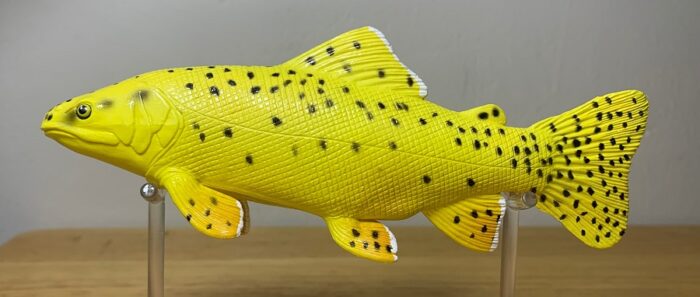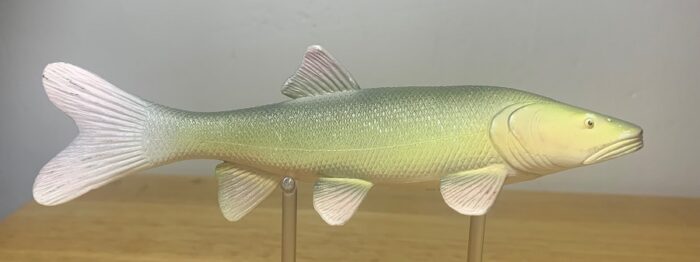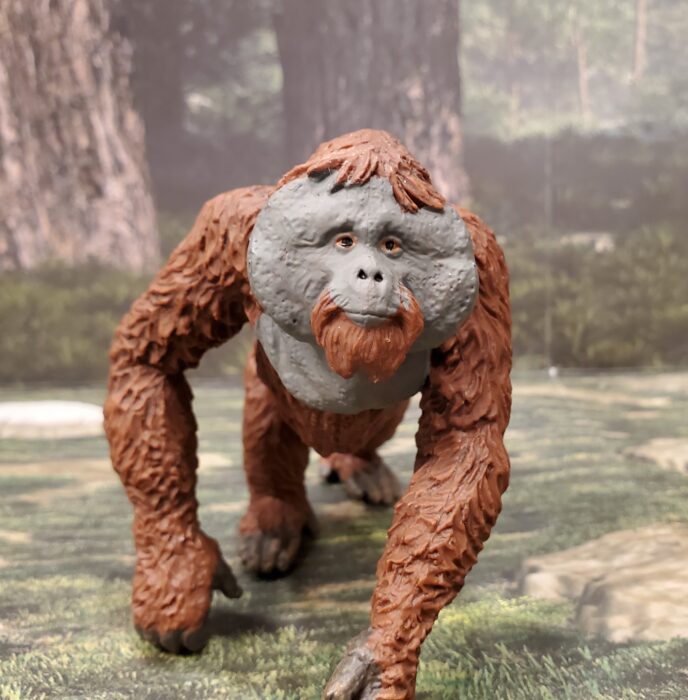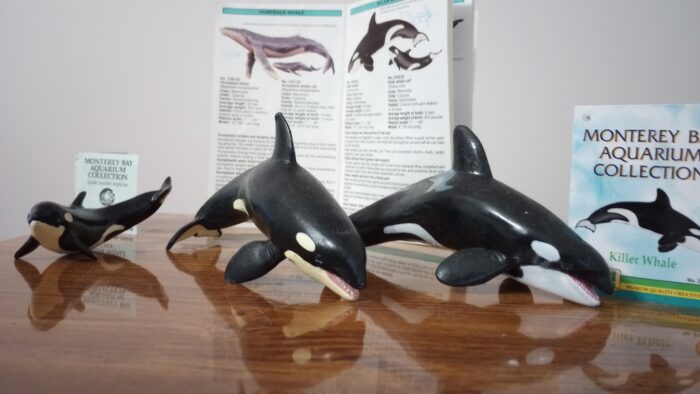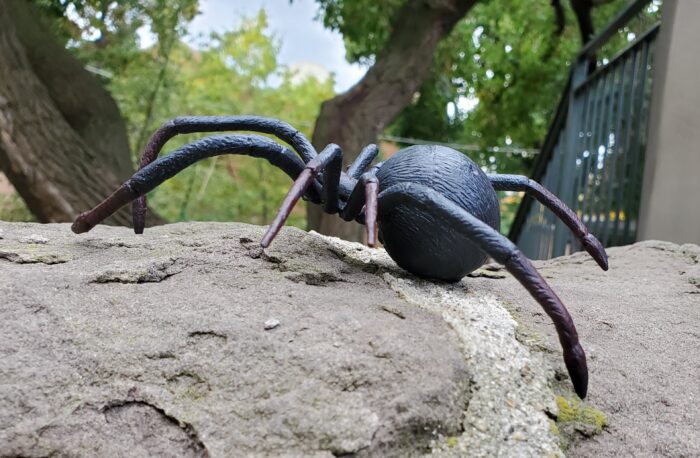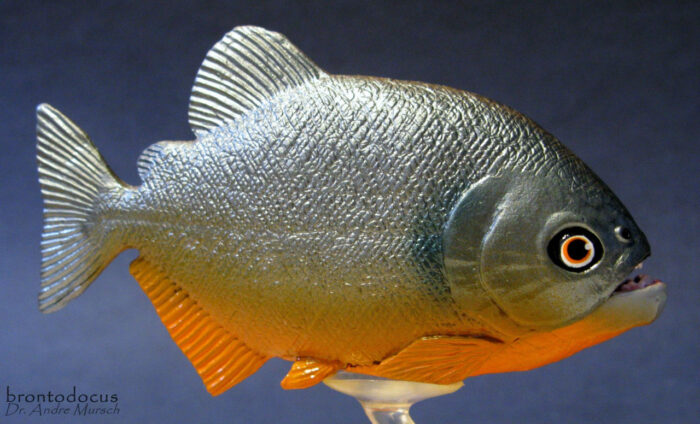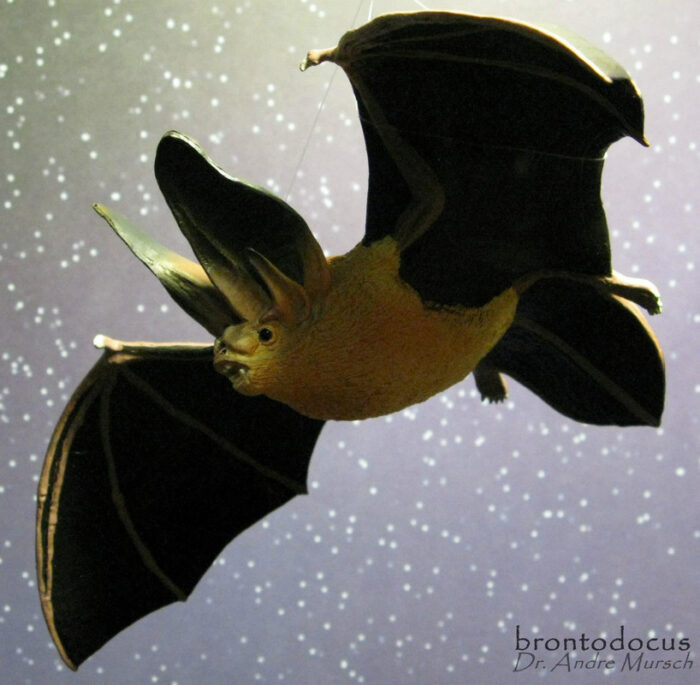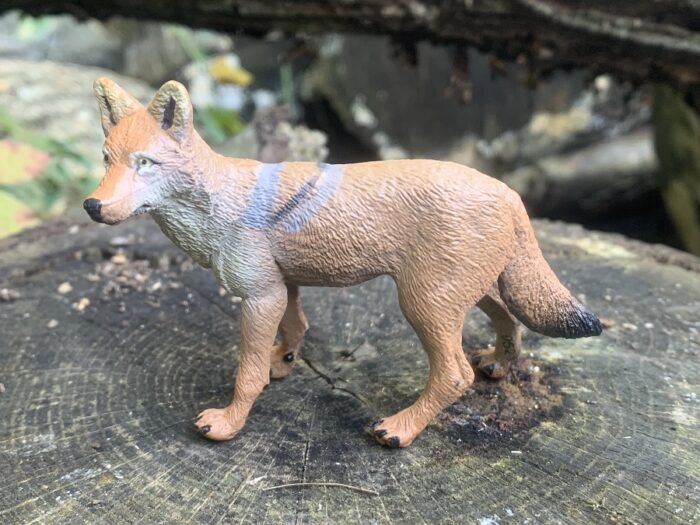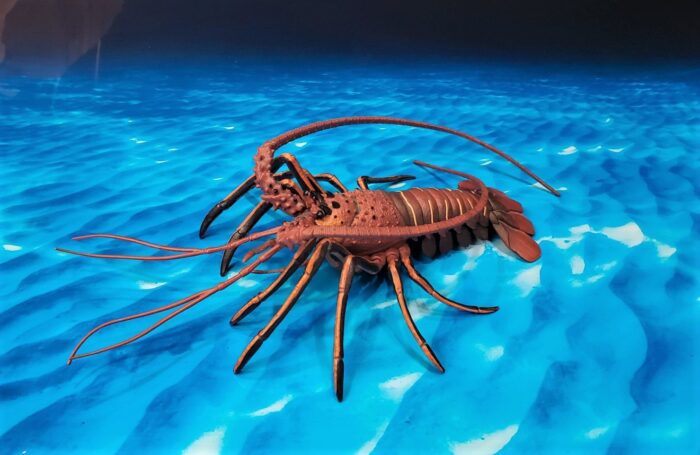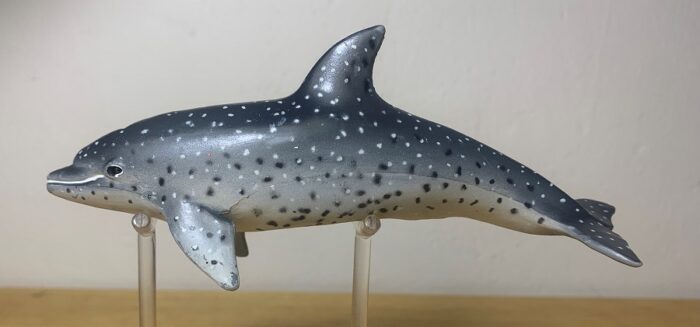For author’s summary of species look here
This will be the last review of a cetacean species from the Monterey Bay Aquarium collection, the sperm whale adult and calf pair.
The adult female measures 29 cm, which corresponds to an 11.6 m whale at the marketed 1:40 scale. Above, you can see it scales well with the Safari Sea Life giant squid (24.5 cm/9.8 m) and the CollectA basking shark (22 cm/ 8.8 m).





